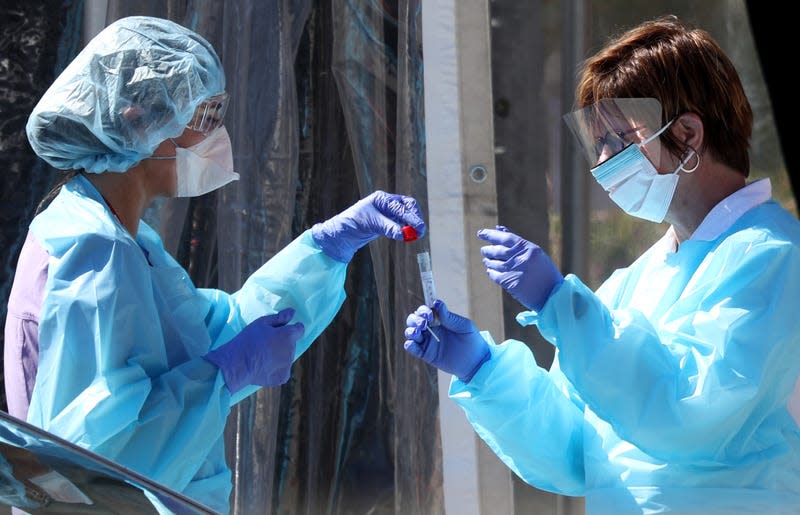What happens when the covid emergency declaration ends?

Covid is almost over—or so says the US presidential administration.
On Jan 31, the White House announced its intention to end the covid public health emergency declaration on May 11. The declaration, which was first put in place on Jan 31, 2020, was renewed for the 13th time this past Jan. 11.
Read more
The national covid emergency—which was first declared on Mar 13, 2020 and has also been repeatedly renewed since—will also end on that day. These declarations allowed the Department of Health and Human Services (HHS) and the rest of the federal government to have more freedom in tackling the pandemic through a wide range of actions. For the duration of the emergency, the government has been able to expand Medicaid and Medicare benefits, introduce covid-specific private insurance requirements, and mobilize funds for investments in medical countermeasures—vaccines, treatments—and preparedness programs.
It is within the framework of these declarations, too, that the federal government passed covid relief measures including stimulus checks, small business funding, health care support, and all the way to the Inflation Reduction Act.
So what happens once the emergency declarations expire?
Covid vaccines, testing and treatment
In a way, the pandemic introduced Americans to a somewhat new experience: government-paid healthcare, if only covid-related. Thanks to emergency federal funding, vaccines, testing, treatment, and even hospitalization have been provided without out-of-pocket spending to both insured and uninsured people.
This will change: With the end of the emergency, whether or not covid treatment and prevention continues to be offered without out-of-pocket spending will depend on states and insurance providers. For instance, insurance will no longer be required to pay for at-home testing or reimburse out-of-network providers for covid-related services.
The government, which has so far purchased the vaccines and treatments offered for free, will no longer do so, allowing pharmaceutical companies to set much higher prices. Pfizer’s vaccine, for instance, will go from about $30 a dose to up to $130.
On a practical level, insured patients are unlikely to see a high copay (though all increased overall costs are eventually passed down as higher premiums), but they might have to pay for the vaccine administration—and any small hurdle, including any copay, is likely to reduce the already-shrinking percentage of people getting boosters.
Uninsured and underinsured patients, meanwhile, might forgo immunization for fear of steep bills. And although pharmaceutical companies have promised programs to grant free access to vaccines to people without insurance coverage, accessing the subsidies might prove complicated enough to dissuade patients.
In addition, actually getting a vaccine might become harder, as the liability immunity has been extended to those who are putting medical countermeasures in place within the emergency declaration. Currently, pharmacists licensed in one state can vaccinate in another, for instance, and healthcare practitioners whose license expired within five years can administer vaccines. This provision is set to expire in October 2024.
Coverage of telehealth services
In order to help curb the spread of covid and avoid unnecessary in-person doctor visits, the government expanded the coverage of telehealth services in early 2020. Medicare dropped several limiting requirements to the coverage of telehealth services, dramatically expanding access. For instance, prior to the pandemic, telehealth was only covered by Medicare if the patient was in an approved healthcare setting, such as the office of another doctor, during the visit. Medicaid coverage for remote visits has varied by state during the pandemic, though many states expanded their reimbursement rules while the emergency is in place.
Private insurers covered telehealth visits all over the country during the emergency, but coverage requirements will vary by state after the declaration ends. In many cases, state laws require parity between coverage of services provided remotely and in person, but in others (such as Alabama and Idaho) no such requirements exist.
The emergency also brought about relaxed rules for the administration of treatments for opioid use disorder, allowing some prescriptions to be filled through telehealth visits, as well as longer take-home regimens. Some of the changes may become permanent at a federal level—the HHS is still accepting comments on some of the proposals—and others will revert to the provisions of state laws. In some cases, this will mean patients will find it harder to access medications or integrate treatments with their daily life, particularly if they have to take more frequent visits to treatment locations.
COBRA election and payment
Typically, workers who lose eligibility to their employer-provided health insurance have up to 60 days to continue receiving the same coverage through COBRA, paying the full premium including the portion otherwise covered by the employer. The emergency brought significant extensions: The election period is currently a year and 60 days since the person became eligible, or 60 days after the end of the emergency, whichever is shorter. This means that if someone loses healthcare eligibility through employment today, they will have until 60 days after May 11 to join COBRA; the same will apply to someone who loses eligibility on May 11.
The same grace period applies to payments. While normally the first COBRA payment is required within 45 days of policy election in order to continue coverage, during the emergency the window was extended to a year and 45 days. This will end after the emergency is over.
Medicaid enrollment
One of the policies enacted contingently with the emergency required states to renew monthly Medicaid enrollment for anyone who benefited from coverage at the start of the pandemic, and for the duration of it. This mandate worked irrespective of state laws on eligibility, and the federal government gave states funding to continue the coverage. This provision is scheduled to end before the emergency, on Mar. 31. Some states will begin taking people off their Medicaid rolls as soon as April—leaving an estimated five to 14 million Americans without insurance.
More from Quartz
Sign up for Quartz's Newsletter. For the latest news, Facebook, Twitter and Instagram.
